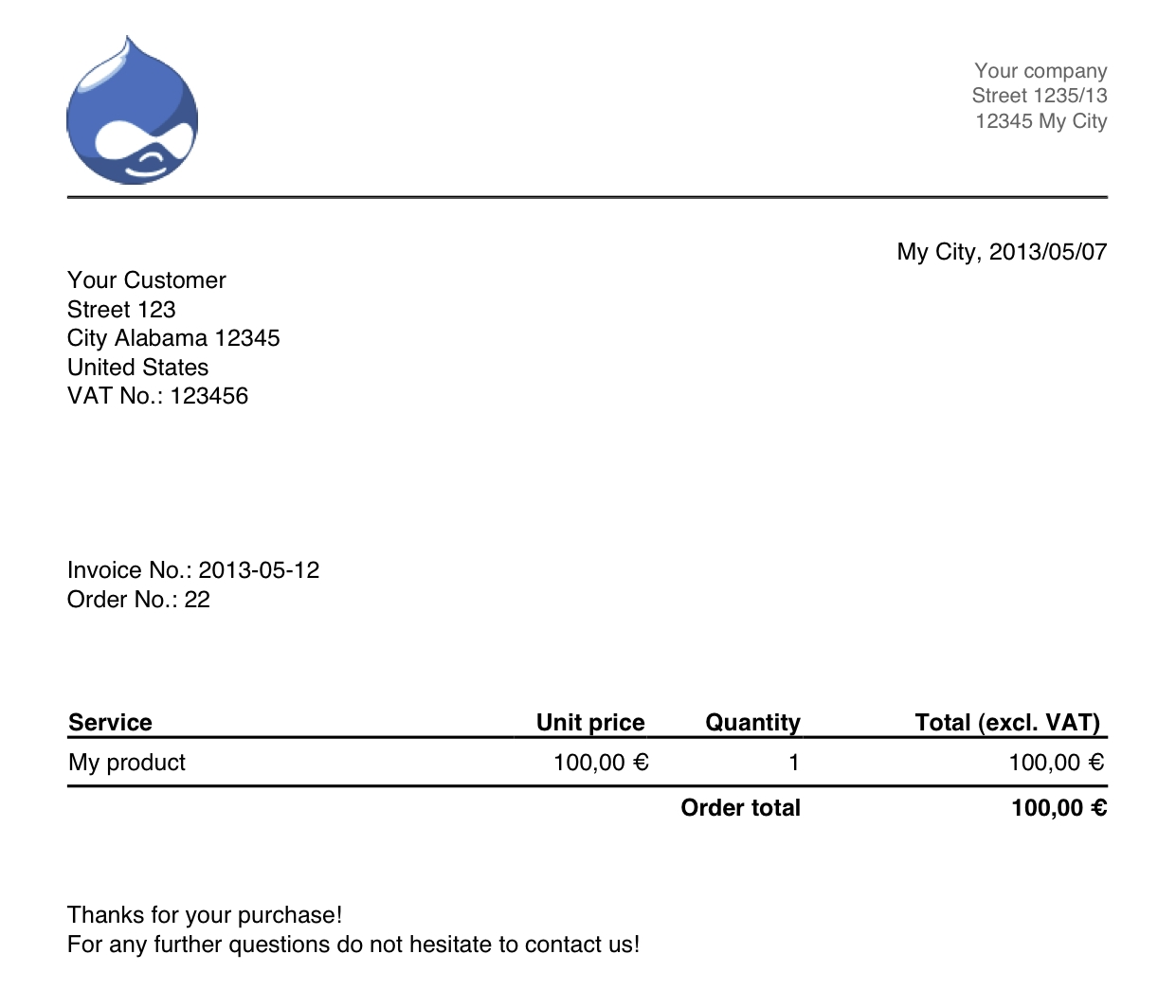Businesses must generate tax invoices that comply with Goods and Services Tax (GST) standards in order to meet legal requirements. To make the taxation of products and services simpler, several countries have implemented the products and Services Tax (GST) system. To guarantee correct GST documentation and reporting, creating a GST-compliant tax invoice is very important.
Why is It Important to Make a Tax Invoice That Complies with GST Laws?
A firm must create a tax invoice that conforms with GST requirements. First of all, a GST invoice is an official document that documents a transaction that has happened. When filing for GST returns, it is crucial to include a legitimate invoice since it includes essential facts about the parties involved, their registration status, the date the invoice was raised, and the specifics of the services that were rendered or received.
The invoice is compared to the transactions that the other parties have indicated in order to guarantee the accuracy of the transaction information. Only when the information given by the taxpayer matches the details mentioned in the invoice do the returns go through, and the output tax due is determined. This also determines how much input tax credit the taxpayer can claim.
The input tax credit is, in essence, the return of taxes you have already paid on a transaction. This is only refundable if the invoices fully comply with the rules for GST compliance. The input tax credit is likely to be reversed and applied to the taxpayer’s output tax burden if they are unable to provide documentation of a legitimate transaction. Ultimately, a GST invoice guarantees that taxpayers don’t overlook their return filing dates. As we previously discussed, a GST invoice is a record of every transaction that occurred within a given month. Therefore, the GST invoice acts as a record to ascertain the amounts of GST that a taxpayer is required to pay and the associated deadline when they complete their monthly reports.
Mandatory Elements of GST Law-compliant Tax Invoice
If your tax invoice fails to have the following elements, then you, along with your customers, will not be able to claim the input tax credit. Take this as a tax invoice-compliant checklist:
- Number and Date of Invoice: This is the serial number for the invoice and the date it was issued. It helps in keeping track of different invoices over time.
- Client Name: This is the name of the customer or company you are billing for.
- Billing and Shipping Addresses: The billing address is where the customer is from, and the shipping address is where the goods are being sent from. This is how it’s different from the billing address.
- GSTINs (Goods and Services Tax Identification Numbers): If the customer and the business are registered for GST, their unique identification numbers are mentioned here.
- Location of the Supply: This tells where the goods or services are being provided or delivered.
- SAC and HSN Codes: These are special codes that classify the type of service or product being provided. It helps in categorising for tax purposes.
- Item Details: This includes information about the goods or services- like a description of the product, quantity, the unit of measurement you’re using (like meters or kilograms), and the total value.
- Taxable Value and Taxes: This is the amount of money that is subject to taxes. It’s the base value for calculating the taxes.
- Tax Rates and Amounts (CGST, SGST, IGST): These are different types of Goods and Services Tax. They show how much tax is being charged on the taxable value.
- Reverse Charge Basis: This indicates whether the customer or the business is responsible for paying the GST. In a reverse charge, it’s usually the customer who pays the tax.
- Vendor Endorsement: It is a confirmation from the seller that the information on the invoice is accurate.
A tax invoice for services must be sent no later than thirty days from the date of provision. Within 45 days of the date of supply, a financial institution or banking firm may issue an invoice.
Steps to Create GST-Compliant Tax Invoice
Here is how to create a compliant tax invoice with GST laws:
Creation of an Invoice in the Taxpayer’s ERP

The taxpayer will keep producing invoices as part of regular company operations. There are requirements for electronically reporting these bills, nevertheless. It must be completed with the required characteristics and in accordance with the e-invoice template. For those who wish to learn how to create an electronic invoice, this is a one-time step.
Creation of the Distinct IRN
Reporting to the Invoice Registration Portal, or IRP, is the next stage in the “how to make e-invoice” process. The e-invoice system uses a hash generation technique to produce the unique number known as the IRN or hash. Every document that is uploaded will have its own 64-character IRN created for it. There are currently two ways to generate the IRN (Invoice Reference Number) in the e-invoice system: offline and via an API.
Creation of the QR Code
The IRN will be generated by the e-invoice system, which will also digitally sign the e-invoice and the QR code (quick response code). The invoices may be quickly viewed, verified, and accessed from mobile devices, thanks to the QR code.
The unique IRN (hash) of the digitally signed QR code may be validated via offline apps and the central portal. Tax officials may find this useful as they may need to verify invoices in locations without internet access, such as highways.
The signed electronic invoice data will be sent to the GST system, where the information contained in the invoice will be used to amend the buyer’s GSTR-2B/2A and the supplier’s GSTR-1. Invoice information will be utilised, if appropriate, to amend “Part A” of the E-Way Bill. Therefore, all that is required to establish an E-Way bill is the vehicle number in “Part B” of the E-Way Bill system.
Software for Creating Tax Invoices
The first tax system powered by technology was created in India and is called the GST. Accounting and invoicing software offers businesses a number of features and benefits that help optimise financial operations, boost efficiency, and ensure compliance with tax laws and invoicing policies.
This tax invoice compliance software creates invoices that look professional. The software can personalise invoice templates by adding your company’s data, branding, and logo and calculate taxes automatically, including GST, using the relevant rates. It can help make detailed invoices that include all of the products and services you delivered. In order to prevent miscommunication, include conditions and payment information.
Conclusion
To put it simply, a tax invoice that complies with GST acts as proof of purchase, containing all the pertinent information on a business transaction. It details what was purchased, how much it cost, and the applicable taxes. Businesses must use these invoices in order to comply with regulations, maintain accurate financial records, and ensure that they are paying the correct taxes. It’s essential to conducting business ethically and maintaining excellent relations with the tax authorities.
Businesses may use a variety of accounting and invoicing software packages to generate tax invoices that adhere to GST requirements. These software products guarantee precise tax calculations, streamline the invoicing process, offer automation options, and give you the templates you need to create bills that look professional. They also support data security, financial reporting, and spending tracking.
India has used tech-driven solutions to handle tax compliance and invoicing because of its complex and varied GST tax structure. Prominent software may assist companies in streamlining their accounting and invoicing processes, guaranteeing compliance with GST laws and the production of expert bills. Simplify your business’s GST tax invoicing process with CaptainBiz and get the tax invoice compliance best practices.
FAQs
Q1: What are GST invoices?
A registered taxpayer is required to issue the GST invoice. The buyer or recipient will only be allowed to claim input tax credit (ITC) if the taxable invoice is presented. The GST invoice does not have a set structure; nonetheless, it must have some required information on its front.
Q2: How many copies of the GST invoice should be drawn?
Issuers simply need to draw two copies of the GST invoice bill since a provision of services does not include any transporters. The service receiver is the owner of the original document. The provider retains the duplicate for internal usage.
Q3: What happens if a registered taxable person doesn’t issue a GST invoice?
A GST invoice is generated upon the provision of taxable goods or services by a registered taxable person. To claim an Input Tax Credit (ITC), an invoice that complies with GST must be sent and received. In the event that a taxpayer fails to provide this kind of invoice to their registered taxable person client, both the taxpayer and the consumer will forfeit their right to an ITC claim.
Q4: Can you personalise your GST Invoice?
You can personalise your invoice with the logo of your company. There are many software online that allow you to customise your GST invoice fully.
Q5: What is the GST invoice reference number?
A supplier receives the invoice reference number when he submits a tax invoice that he has issued through the GST system. It is good for 30 days after the invoice is uploaded. Copy in triplicate: It is stamped ‘Triplicate for supplier’ and is kept by the supplier.
